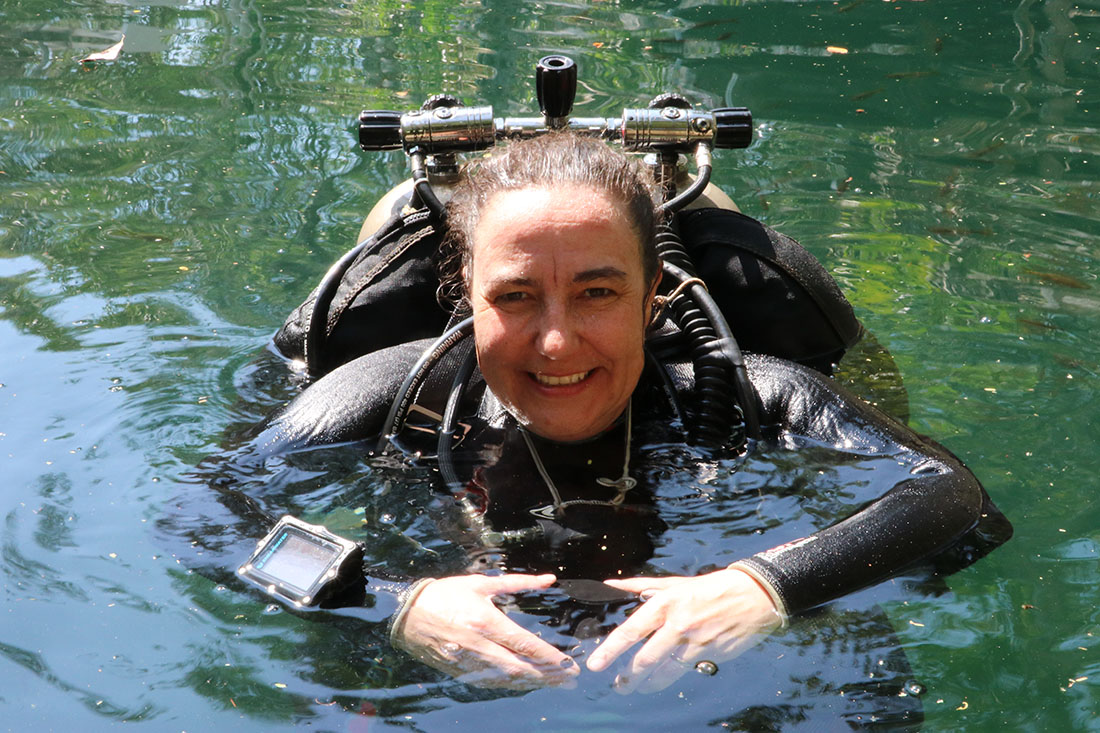By Tiffany Chen
Medill Reports
Yucatan Peninsula. Even the tropical jungle of the Yucatan Peninsula reveal traces of the last ice age. The remains of them mammoth animals of the Late Pleistocene are safe and sound, not buried but submerged in the water-filled chambers in underground caves.
Cave divers discovered the skeletons of ice age animals that roamed the Earth before their extinction – giant ground sloths, saber-toothed cats, elephant-like gomphotheres and other megafauna. And then researchers discovered a young woman they call Naia, preserved as one of the oldest human skeletons found in North America and the most complete. She is under 5 feet tall and may have been about 15 or 16 years old when she fell to her death some 13,000 years ago.
At the Yucatan Peninsula, freshwater from the underground cave system is the main source of water. In the search for fresh water, Naia’s people and the Late Pleistocene animals they hunted during the last ice age entered the cave, wandering slick passages. With a wrong step, they fell into a bell-shaped pit hole, now named Hoyo Negro, Spanish for “Black Hole.” The chamber is more than 100 feet deep and 200 feet at its widest.
Beddows, an expert cave diver, joined the research team that studied Naia and published their findings in Science magazine.
Today, Hoyo Negro is filled with water. But about 13,000 years ago, at the end of the last ice age, the sea level was some 250 feet lower than it is today, Sea levels drop in the grip of ice ages. And so did the water level in the caves.

“The groundwater layer literally just sunk down through the rocks,” Beddows said. “Since fresh rain water floats on the heavier marine water that is down below across the whole peninsula, when marine water is lower, then the layer of the fresh water is lower.”
Beddows is looking at the water flows and rocks of the peninsula to assess how sea level change really does allow the fresh groundwater to go up and down. By knowing more about the rock beds, Beddows and her students are able to better interpret the water level in Hoyo Negro since the fresh water is tied to the sea.
“When Naia fell in, it looks like there would have been some shallow water still inside Hoyo Negro,” Beddows said. “She would have fallen over 100 feet, hit the water, hit the rocks. There is good evidence that she floated before the body finally settled on the rocks, because of the way her body is broken up.”
Researchers found Naia’s body in three sections: the upper body, middle part and legs found in clumps on rocks with some short distance between them, which is a trait found in bodies that float on water. When bodies biologically break down, the spinal columns separate and leave parts of the body floating in different directions.
“The skeletons are beautifully laid out,” said Beddows. “The caves have a low energy level. The sedimentation rate is very low, and because now the [caves] are flooded, the constant water temperature at 26 degrees Celsius also helps preserve the skeleton.”


